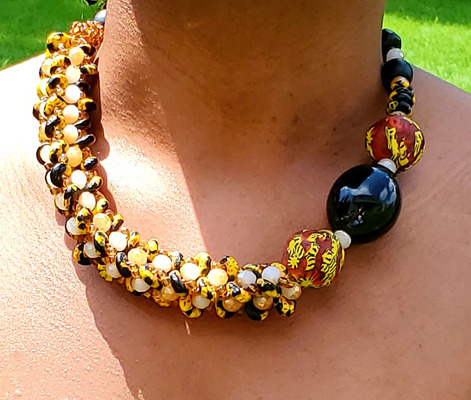
Glass bead necklaces from Ghana are a vibrant and integral part of the country's cultural heritage. These exquisite pieces are not just accessories but carry deep historical and social significance. The tradition of bead-making in Ghana dates back centuries and is particularly prominent among the Krobo people in the Eastern Region.
The process of making glass beads is intricate and labor-intensive. Artisans typically use recycled glass, which is crushed into a fine powder. This powder is then poured into molds and heated in a kiln until it fuses into solid beads. The beads are often hand-painted with intricate designs, making each piece unique. This traditional technique, known as "powder glass" bead-making, showcases the remarkable skill and creativity of Ghanaian artisans.
Glass bead necklaces are worn during important ceremonies and festivals, such as the Dipo initiation rites, which mark a girl's transition into womanhood. They are also used in various rituals and as symbols of status and identity. The colors and patterns of the beads can signify different meanings, such as social status, age, or clan affiliation.
In contemporary times, these necklaces have gained international acclaim for their beauty and craftsmanship. They are highly sought after by collectors and fashion enthusiasts worldwide. Each necklace not only reflects the rich cultural heritage of Ghana but also supports local artisans and their communities.
Owning a glass bead necklace from Ghana is more than just having a piece of jewelry; it is embracing a piece of African history and artistry. These necklaces are a testament to the enduring legacy of Ghana's bead-making tradition and its cultural significance.
|
|